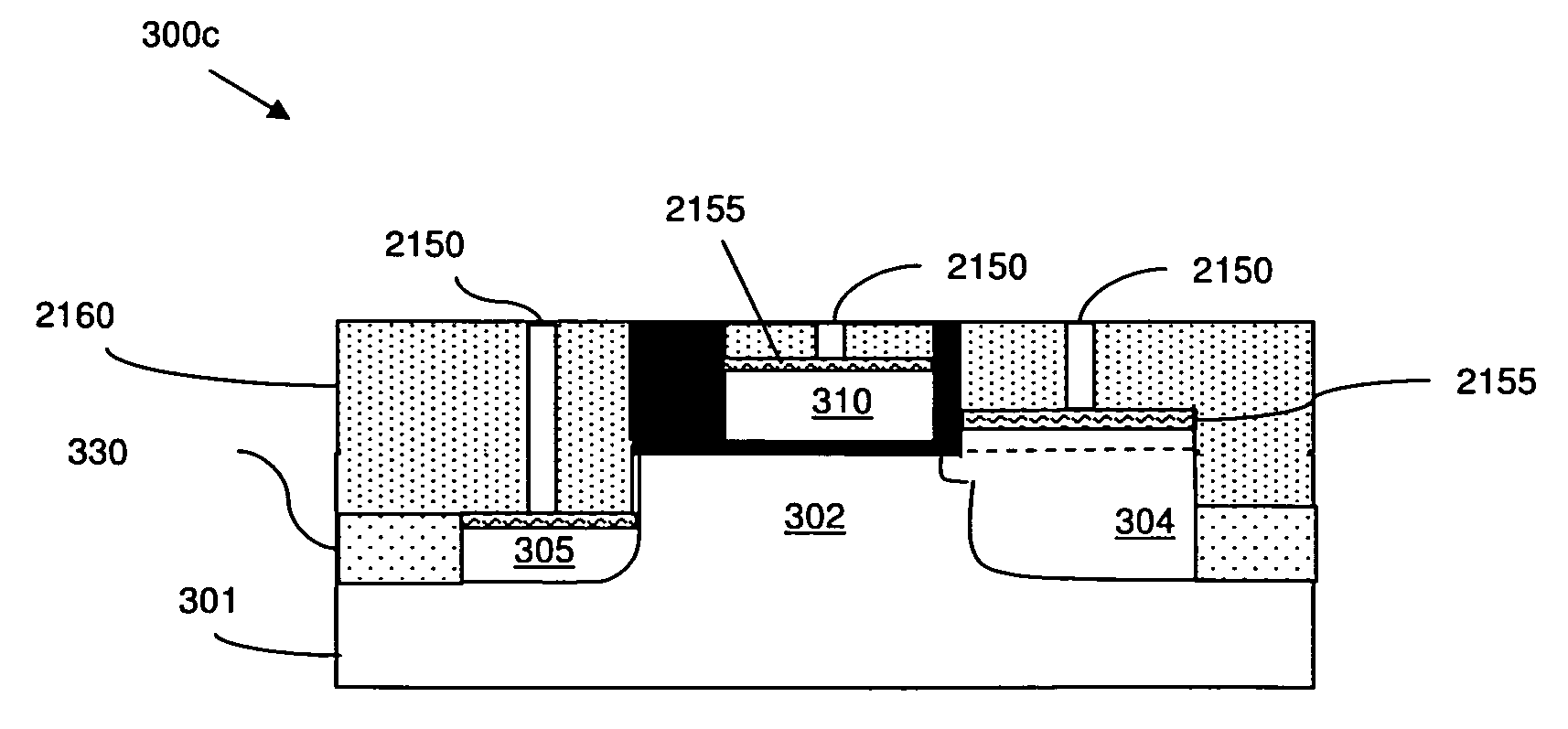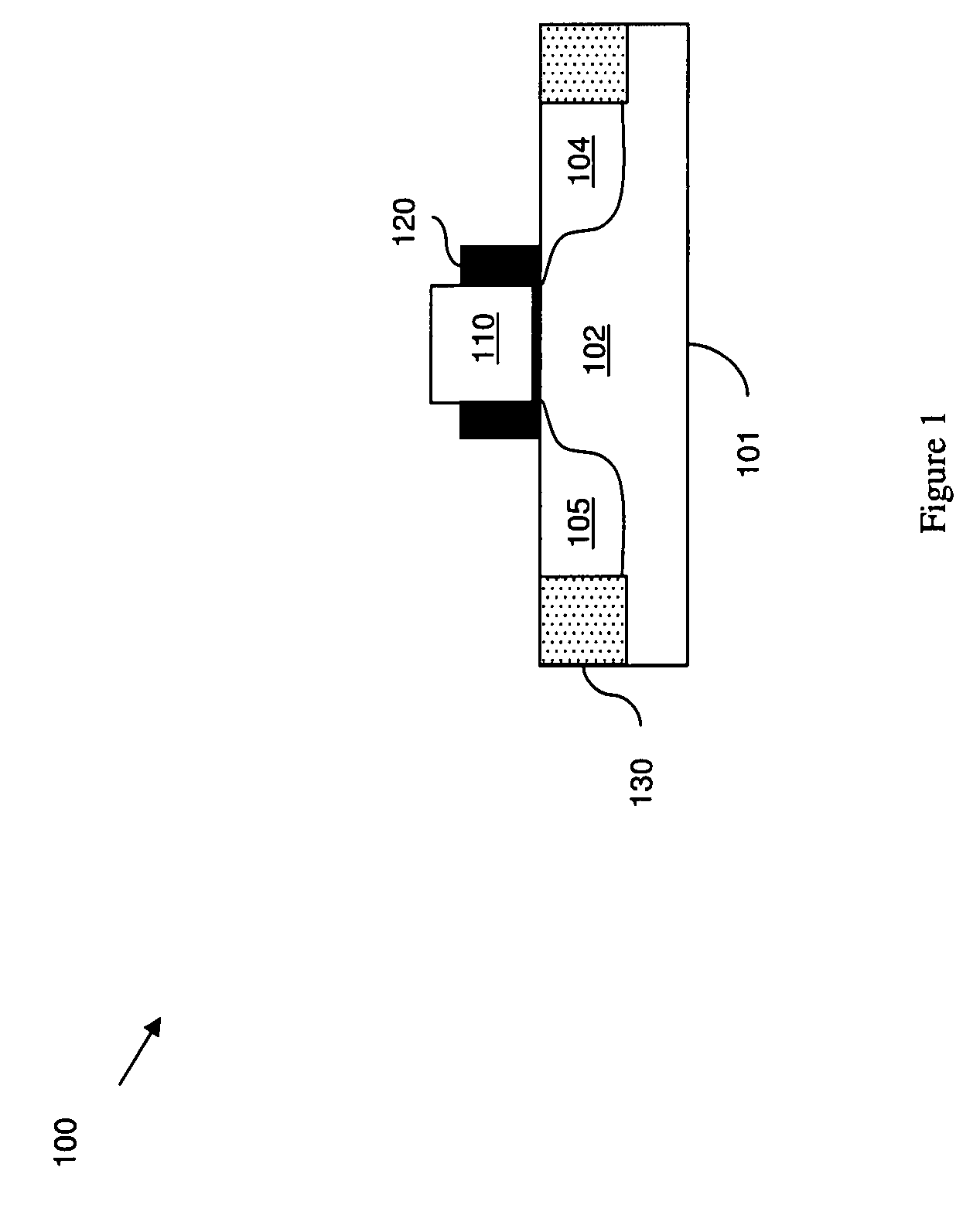Asymmetric field effect transistor structure and method
a field effect transistor and asymmetric technology, applied in the field of field effect transistors, can solve the problems of increasing circuit delay, gate to drain capacitance can influence circuit delay significantly more, and circuit delay is more sensitive, so as to achieve minimal circuit delay, improve drive current, and improve performance
- Summary
- Abstract
- Description
- Claims
- Application Information
AI Technical Summary
Benefits of technology
Problems solved by technology
Method used
Image
Examples
embodiment 200
[0059]In this embodiment 200, the source and drain regions 204, 205 can have different heights 214, 215 that are tailored to minimize series resistance in the source region as well as to simultaneously minimize gate to drain capacitance. Specifically, the source region 204 can have one height 214 (i.e., a first predetermined height) relative to the top surface 203 of the channel region 202 and the drain region 205 can have a different height 215 (i.e., a second predetermined height) relative to the top surface 203 of the channel region 202. The predetermined height 215 of the drain region 205 can be less than the predetermined height 214 of the source region 204 (i.e., the height of the drain region can be lower relative to the top surface of the channel region than the height of the source region). This asymmetric configuration allows series resistance in the source region and gate to drain capacitance to be simultaneously minimized. More specifically, the values of the height 214 ...
embodiment 300
[0065]In this embodiment 300, in addition to having different heights 314, 315, the source and drain regions 304, 305 of the transistor structure 300 can further be separated from the gate electrode 310 by different distances 351, 352 in order to further minimize series resistance in the source region as well as to further minimize gate to drain capacitance. Specifically, the source region 304 can have one height 314 (i.e., a first predetermined height) relative to the top surface 303 of the channel region 302 and the drain region 305 can have a different lesser height (i.e., a second predetermined height) relative to the top surface 303 of the channel region 302. That is, the height of the drain region can be lower, relative to the top surface of the channel region, than the height of the source region. Additionally, the source region 304 can be separated from the gate electrode 310 by one distance 351 (i.e., a first predetermined distance) and the drain region 305 can be separated...
PUM
 Login to View More
Login to View More Abstract
Description
Claims
Application Information
 Login to View More
Login to View More - R&D
- Intellectual Property
- Life Sciences
- Materials
- Tech Scout
- Unparalleled Data Quality
- Higher Quality Content
- 60% Fewer Hallucinations
Browse by: Latest US Patents, China's latest patents, Technical Efficacy Thesaurus, Application Domain, Technology Topic, Popular Technical Reports.
© 2025 PatSnap. All rights reserved.Legal|Privacy policy|Modern Slavery Act Transparency Statement|Sitemap|About US| Contact US: help@patsnap.com



